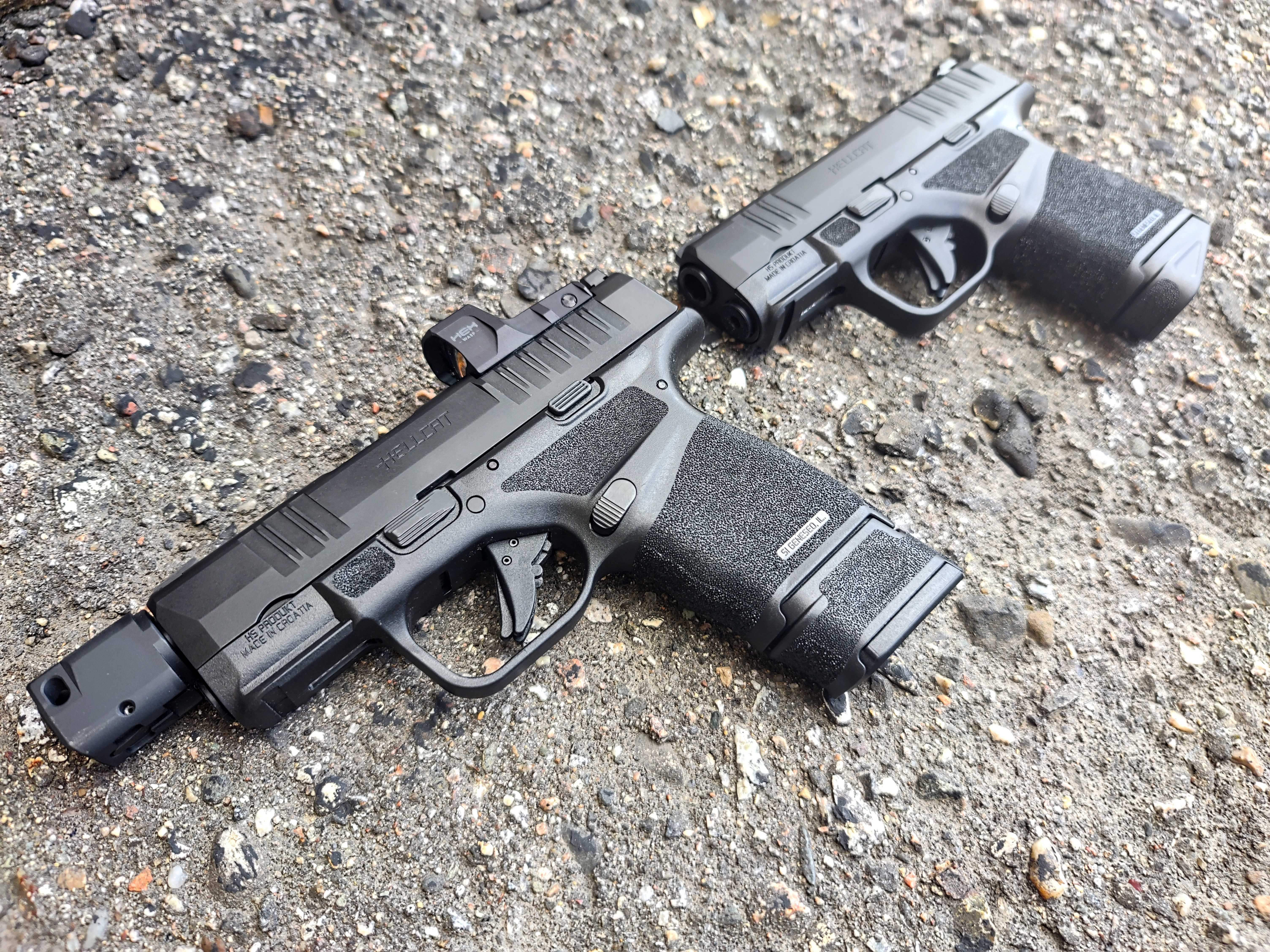The Pros and Cons of Using a Pistol Compensator | Tyrant CNC

Jan 23, 2025
By marketwake
0 comment(s)
Compensated pistols used to be considered somewhat of an oddity within the firearms world. While pistol compensators aren’t exactly a “new” concept (Mobster John Dillinger used a Lebman 1911 Chambered in 38 Super that used a compensator that has been dated back to the 1930s) true widespread adoption of compensators on pistols really didn’t start taking off until about the 1970s when they began to be showcased heavily during competitive shooting events. Fast forward to today and we’ve now got the newest class of pistol (the everpresent micro- compact) featuring these tiny little devices and this has led many to question whether they are a boon to your concealed carry game or just a bunch of extra weight and bulk you’d be better off without. So what exactly do pistol compensators do and what are the pros and cons of having one on your carry gun?
What is a Pistol Compensator?
Pistol compensators are fairly simple gun parts that are somewhat similar to ported barrels in that they help redirect the gasses in such a way as to either mitigate or reduce the effect that the propellant gasses have on recoil characteristics.
Pros of a Pistol Compensator
Generally speaking smaller guns like the micro-compact Glock 43X or even the Springfield Hellcat will experience more recoil than their larger cousins simply because there is less mass to arrest the movement of the gun after firing. Compensators can help reduce this recoil which should help keep the felt recoil lower, and also help you maintain a clean sight picture of your intended target. So the obvious reason to carry a compensator-equipped pistol is clear - you’re simply trying to reduce felt recoil and muzzle rise for better accuracy and faster follow-up shots - something that could potentially save your life.
Cons of a Pistol Compensator
However, pistol compensators aren’t all rainbows and sunshine, there are quite a few drawbacks that have kept many from adopting them as part of their daily carry routine. First off and probably the most notable is the extended length that you’ll find your pistol now has. On average a barrel-mounted pistol compensator adds about an inch to the overall length of the firearm meaning you’ll have a slightly more difficult time concealing the weapon. However, since the length of the gun is the easiest aspect to conceal, many can ignore this. Another downside to pistol compensators has more to do with general training - they’re really loud. If you’re accustomed to training at an outdoor range this may be less of an issue but any sort of indoor or partially covered shooting will result in your brain case getting rattled with each shot. Pistol compensators also increase muzzle flash which could prove to be disorienting in low-light situations.
The real rub is that pistol compensators really only work efficiently when paired with hotter ammunition. The higher pressure and higher velocity gasses also put in more work when being ejected from the compensator's ports resulting in a greater reduction of felt recoil and muzzle rise, but also producing a much louder report and larger muzzle flash.
Practical Considerations for Ammo Selection
One thing you’ll want to keep in mind with compensators is the type of ammo you’re running. Compensators work best with higher-pressure loads like +P ammo, as the increased gas pressure maximizes the recoil reduction and muzzle control benefits. Standard-pressure loads can still work, but you might not see as much of an improvement. This is why it’s always a good idea to test different ammo types with your compensator to see what feels best. Keep in mind, the extra gas venting can also make some rounds feel louder than others, which might be worth considering if you train indoors.
Training Is Key for Everyday Carry
As great as a compensator can be for managing recoil, it’s not a magic fix—it’s a tool that works best when you put in the time to train with it. The added length and weight might slightly change the balance of your carry gun, and you’ll want to practice drawing from your holster to make sure everything feels natural. Additionally, compensators can increase muzzle flash in low-light conditions, which is something you’ll want to test at the range to see how it affects your follow-up shots. The bottom line? Gear is important, but training and familiarity are what will truly give you the edge in a self-defense scenario.
So should you carry a compensated carry piece? That’s going to be entirely up to you. I’m personally experimenting with the concept with new offerings to the market like the SIG P365 Spectre Comp, and the Springfield Hellcat RDP pistols which both make use of some sort of compensator to reduce recoil while adding a marginal amount of length and weight to the firearm. The best advice I have if you’re considering using one on a carry gun is to judiciously train with it and then make your decision! Would you ever use a compensator on your carry gun or do you already? Let us know what your experiences and thoughts are down in the comments below!
